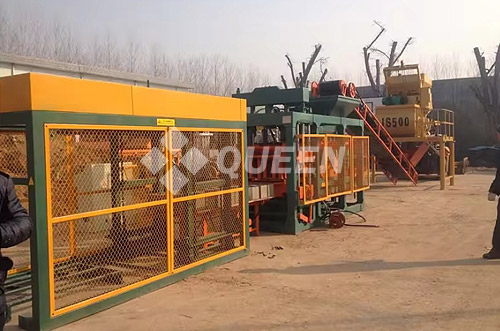Block making is a critical process in the construction industry, where various types of blocks, including concrete blocks, hollow blocks, and paver blocks, are produced for use in building projects. To create these blocks, a range of specialized machines is used, each designed to fulfill a specific function within the production process. This article explores the main types of machines used in block making and their roles in creating high-quality building blocks.

Types of Machines in Block Making
- Block Molding Machine: The block molding machine is the central piece of equipment in block making. It is responsible for compressing and shaping the block material into the desired forms. These machines can be manual, semi-automatic, or fully automatic, with varying levels of automation and production capacity.
- Mixing Machine: Also known as a concrete mixer, this machine combines raw materials such as cement, sand, aggregate, and water to create a uniform mixture. The consistency and quality of the mixture are crucial for producing durable and strong blocks. Mixing machines come in various sizes, from small portable mixers to large industrial mixers for high-capacity production.
- Batching Plant: A batching plant is an advanced system used to measure and combine raw materials with high precision. It ensures that each batch has the correct proportions of cement, aggregates, and other components. Batching plants are crucial for maintaining consistency and quality in large-scale block production.
- Conveyor Systems: Conveyor systems are used to transport materials throughout the block-making process. They carry raw materials to the mixing machine, move mixed concrete to the molding machine, and transfer finished blocks to curing or storage areas. Conveyor systems help improve efficiency and streamline production.
- Vibrating Table: Vibrating tables are used to compact concrete within molds, ensuring that there are no air pockets and that the concrete is evenly distributed. This compaction process is essential for achieving high-strength blocks.
- Curing Chamber: Curing is a critical step in block making, where the blocks are allowed to harden and gain strength. Curing chambers provide controlled environments with specific temperature and humidity levels to facilitate proper curing. They can be simple outdoor setups or sophisticated indoor systems with automated climate control.
- Stacking Machine: Stacking machines automate the process of stacking finished blocks for storage or transport. This automation helps reduce manual labor and increases efficiency in block handling.
- Control System: A control system, often computerized, monitors and manages the various stages of the block-making process. It ensures that machines operate within specified parameters and provides automation to reduce manual intervention.
